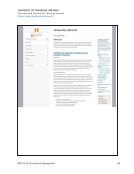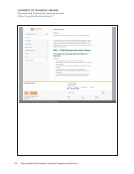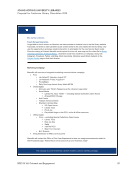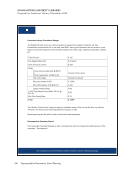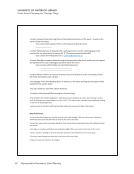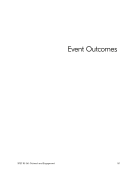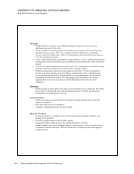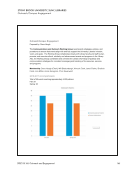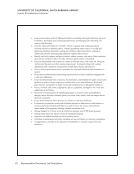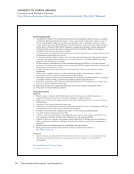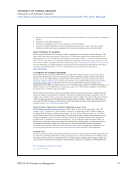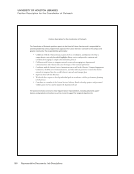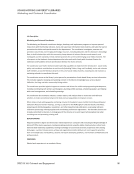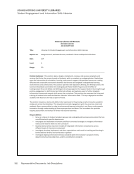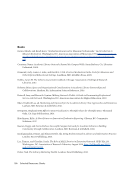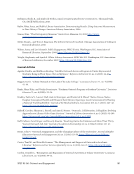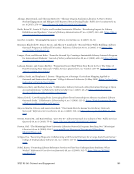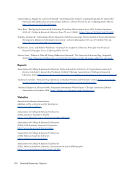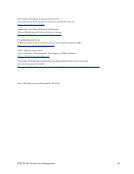85 SPEC Kit 361: Outreach and Engagement It is promoted via email, website, and social media. [Collaborators not identified.] Unknown. RUSA is the lead on this event and performs assessment. Library staff and faculty attend, so we have anecdotal data about the success of the event. The event sells out very quickly and we can see lots of social media posts from happy participants. Case Study 8 Designing day-long workshop with hands-on activities for pre-collegiate minority student leadership group. Students were encouraged to reflect on family, culture, and community. Hands-on activities included making their own memory book, assembling images and content into collages for the book, and creating an audio file. Administrator for the sponsoring division approved. Budget/costs were $450 for snacks and lunch for participants, plus acquisition of a Polaroid camera and film for instant hardcopy selfies. Administrator, librarians, and staff from the sponsoring departments, with invited participants from another library department It was promoted directly to the targeted group as participants could choose from among several campus activities. The pre-collegiate program handled all of the promotional information and communication to encourage registration. Internal collaborators were librarians and staff from the library’s preservation unit, special collections and archives, and instruction department. External collaborators were staff from the pre-collegiate program. Participants in sponsoring units (preservation, special collections, and archives) volunteered instruction librarians were invited to help design, teach, and assess the workshop. We use a standardized evaluation form created by instruction department staff for evaluating the learning outcomes and participant satisfaction with the programming. The standardized evaluation form includes minute paper questions, Likert-scale questions for participants to rate the effectiveness of the instructors and session in helping them learn, plus anything else they would like to say. Headcount was also used as another measure of interest in the program. Evaluations were enthusiastic and positive, with strong agreement on effectiveness of instructors and effectiveness of session. All participants were able to come up with a short list of concrete things they learned as a result of participating in the program. There were no negative comments submitted. Headcount also showed increased attendance from an earlier iteration of this program. Case Study 9 Expanding Visions Foundation Internship Program. The goals are to provide high school students from underserved groups an opportunity to gain hands-on work experience, introduce them to careers in libraries, and encourage them to consider higher education after graduation. The program was approved by our executive committee. The budget is approximately $20K per year. We have two liaisons for this program: one faculty librarian, and our Program Director for Outreach & Engagement. The liaisons do most of the planning, evaluating, and managing the program. A variety of staff and faculty participate as mentors or supervisors. We included information about the new program in our weekly newsletter and hosted an informal meeting for any faculty and staff who were interested in participating. Finally, we accepted proposals from colleagues who wanted to serve as a supervisor or mentor in the program. The liaisons made recommendations to our executive committee, who made the final selections.








































































































































